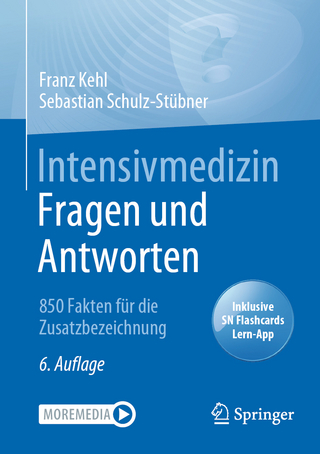
Endoscopic and Keyhole Cranial Base Surgery
Springer International Publishing (Verlag)
978-3-319-64378-6 (ISBN)
Extending beyond the technical details of these procedures, this text provides a third section that focuses on a thorough analysis and comparison of theendoscopic, keyhole and traditional open approaches to specific intracranial regions. Utilizing a "target-based" approach, the utility of each surgical technique is evaluated in regard to accessing pathology of the anterior, middle and posterior fossa cranial base as well as the deep central regions of the brain. All chapters are written by experts in their fields and include the most up to date scientific and clinical information.
Endoscopic and Keyhole Cranial Base Surgery will be a valuable resource to specialists in optimizing surgical results and improving patient outcomes.
James J. Evans, MDProfessor of Neurological Surgery and Otolaryngology Director of Cranial Base and Pituitary SurgeryThomas Jefferson University909 Walnut Street2nd Floor, COB Bldg.Philadelphia, PA 19107Tyler J. Kenning, MDAssistant Professor of NeurosurgeryDirector, Pituitary and Minimally Invasive Cranial Base Surgery ProgramDirector, Brain Tumor and Neuro-oncology ClinicAlbany Medical Center47 New Scotland Ave, MC-10Albany, NY 12208Christopher Farrell, MDAssistant Professor of NeurosurgeryThomas Jefferson University909 Walnut Street2nd Floor, COB Bldg.Philadelphia, PA 19107Varun R. Kshettry, MDAssociate Staff, Skull Base and Cerebrovascular SurgeryMinimally Invasive Cranial Base and Pituitary Surgery ProgramDepartment of Neurological SurgeryCleveland ClinicCleveland, OHUSA
Principles of Endoscopic Endonasal Surgery.- Sinonasal and Parasellar Anatomy.- Nasal Flaps and Reconstruction.- Functional and Non-Functional Pituitary Adenomas.- Suprasellar Pathology.- Anterior Cranial Base.- Cavernous Sinus and Meckel's Cave.- Clivus and Upper Cervical Spine.- Intraventricular Approaches.- Principles of Minimally Invasive Keyhole Surgery.- Keyhole Supraorbital Craniotomy: Eyelid and Eyebrow Approaches.- Mini-Pterional Craniotomy.- Endoscopic and Keyhole Approaches to the Cerebellopontine Angle.- Neuroendoscopic and Keyhole Approaches to the Pineal Region.- Transcortical Corridors.- Olfactory Groove Meningiomas: Introduction.- Olfactory Groove Meningiomas: Open Transcranial Approaches.- Olfactory Groove Meningiomas: Keyhole Craniotomy.- Olfactory Groove Meningiomas: Endoscopic Endonasal Approach.- Olfactory Groove Meningiomas: Editors' Commentary.- Planum/Tuberculum Sella Meningiomas: Introduction.- Planum/Tuberculum Sella Meningiomas: Open Approaches.- Planum/Tuberculum Sella Meningiomas: Supraorbital Keyhole Approach.- Planum/Tuberculum Sella Meningiomas: Endoscopic Endonasal Approaches.- Planum/Tuberculum Sella Meningiomas: Editors' Commentary.- Suprasellar Craniopharyngiomas: Introduction.- Suprasellar Craniopharyngiomas: Open Transcranial Approaches.- Suprasellar Craniopharyngiomas: "Eyebrow" Supraorbital Craniotomy Approach.- Suprasellar Craniopharyngiomas: Endoscopic Endonasal Approach.- Suprasellar Craniopharyngiomas: Editors' Commentary.- Petrous Apex Cholesterol Granulomas: Introduction.- Petrous Apex Cholesterol Granulomas: Open Transcranial Approaches.- Petrous Apex Cholesterol Granulomas: Endoscopic Endonasal Approaches.- Petrous Apex Cholesterol Granulomas: Editors' Commentary.- Pineal Region Tumors: Introduction.- Pineal Region Tumors: Open Transcranial Approaches.- Pineal Region Tumors: Keyhole Craniotomy.- Pineal Region Tumors: Editors' Commentary.- Clival Chordomas: Introduction.- Clival Chordomas: Open Transcranial Approaches.- Clival Chordomas: Endoscopic Endonasal Approach.- Clival Chordomas: Editors' Commentary.- Colloid Cysts: Introduction.- Colloid Cysts: Open Transcranial Approaches.- Third Ventricular Colloid Cysts: Endoscopic Transventricular Approach.- Colloid Cysts: Editors' Commentary.- Intracranial Aneurysms: Introduction.- Intracranial Aneurysms: Keyhole Transcranial Approaches.- Intracranial Aneurysms: Endoscopic Endonasal Approaches.- Intracranial Aneurysms: Editors' Commentary.
"The approach is highly instructive, and a whole separate volume full of difficult cases with this sort of teaching approach would be welcomed by legions of skull base surgery learners around the globe." (Kumar Vasudevan, Neurosurgery, Vol. 86 (1), 2020)
“The approach is highly instructive, and a whole separate volume full of difficult cases with this sort of teaching approach would be welcomed by legions of skull base surgery learners around the globe.” (Kumar Vasudevan, Neurosurgery, Vol. 86 (1), 2020)
| Erscheinungsdatum | 26.11.2018 |
|---|---|
| Zusatzinfo | XX, 396 p. 238 illus., 207 illus. in color. |
| Verlagsort | Cham |
| Sprache | englisch |
| Maße | 210 x 279 mm |
| Gewicht | 1732 g |
| Themenwelt | Medizinische Fachgebiete ► Chirurgie ► Neurochirurgie |
| Medizin / Pharmazie ► Medizinische Fachgebiete ► HNO-Heilkunde | |
| Schlagworte | cavernous sinus • Intracranial Hemorrhage • Intracranial Surgery • Medicine • Medicine: general issues • Mini-Pterional Craniotomy • neurosurgery • Olfactory Groove Meningiomas • otorhinolaryngology • Otorhinolaryngology (ENT) • Posterior Cranial Fossa • Sinonasal and Parasellar Anatomy • Supraorbital Keyhole Approaches • Transorbital Keyhole Approaches |
| ISBN-10 | 3-319-64378-9 / 3319643789 |
| ISBN-13 | 978-3-319-64378-6 / 9783319643786 |
| Zustand | Neuware |
| Informationen gemäß Produktsicherheitsverordnung (GPSR) | |
| Haben Sie eine Frage zum Produkt? |
aus dem Bereich


